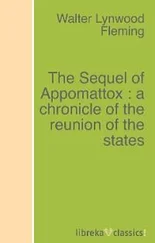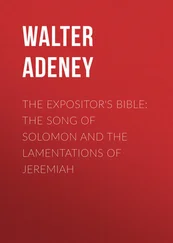Walter Gallichan - The Story of Seville
Здесь есть возможность читать онлайн «Walter Gallichan - The Story of Seville» — ознакомительный отрывок электронной книги совершенно бесплатно, а после прочтения отрывка купить полную версию. В некоторых случаях можно слушать аудио, скачать через торрент в формате fb2 и присутствует краткое содержание. Жанр: foreign_antique, foreign_prose, Путешествия и география, на английском языке. Описание произведения, (предисловие) а так же отзывы посетителей доступны на портале библиотеки ЛибКат.
- Название:The Story of Seville
- Автор:
- Жанр:
- Год:неизвестен
- ISBN:нет данных
- Рейтинг книги:4 / 5. Голосов: 1
-
Избранное:Добавить в избранное
- Отзывы:
-
Ваша оценка:
- 80
- 1
- 2
- 3
- 4
- 5
The Story of Seville: краткое содержание, описание и аннотация
Предлагаем к чтению аннотацию, описание, краткое содержание или предисловие (зависит от того, что написал сам автор книги «The Story of Seville»). Если вы не нашли необходимую информацию о книге — напишите в комментариях, мы постараемся отыскать её.
The Story of Seville — читать онлайн ознакомительный отрывок
Ниже представлен текст книги, разбитый по страницам. Система сохранения места последней прочитанной страницы, позволяет с удобством читать онлайн бесплатно книгу «The Story of Seville», без необходимости каждый раз заново искать на чём Вы остановились. Поставьте закладку, и сможете в любой момент перейти на страницу, на которой закончили чтение.
Интервал:
Закладка:
Walter M. Gallichan
The Story of Seville
The Story of Seville
"He who Seville has not seen,
Has not seen a marvel great."
"To whom God loves He gives a house in Seville."
Popular Spanish Sayings.PREFACE
IN the story of Seville I have endeavoured to interest the reader in the associations of the buildings and the thoroughfares of the city.
I do not claim to have written a full history of Seville, though I have sketched the salient events in its annals in the opening chapters of this book. The history of Seville is the history of Spain, and if I have omitted many matters of historical importance from my pages, it is because I wished to focus attention upon the city itself. I trust that I have succeeded in awaking here and there an echo of the past, and in bringing before the imagination the figures of Moorish potentate or sage, and of Spanish ruler, artist, priest and soldier.
Those who are acquainted with the history of Spain will appreciate the difficulty that besets the historian in the matter of chronological accuracy, and even in a narration of many of the main events. The chronicles of the Roman, Gothic and Moorish epochs are hardly accepted as reliable. Patriotic bias and religious enthusiasm are elements that frequently mislead in the making of history, though the Spaniard is not alone in the commission of error in this respect.
Seville abounds with human interest. The city may at the first glance slightly disappoint the visitor, but he cannot wander far without a growing sense of its fascination. Most of the noteworthy buildings are hidden amidst narrow alleys, for the designers of the city have shown great economy in utilising space. It is therefore difficult to gain large general views of Seville, unless one ascends the Giralda, while the obtrusion of modern dwelling-houses and stores often mars the view of fine public edifices. But the modernity of Seville seldom strikes one as wholly out of place and in sharp contrast to the ancient monuments. The plan is Morisco, and the impression conveyed is partly Moorish and partly mediæval. In a word, Seville brings us at every step closely in touch with antiquity.
For the chapters on the Artists of Seville I am indebted to C. Gasquoine Hartley (Mrs. Walter M. Gallichan), who has devoted much study to the art of Spain. The drawings by Miss Elizabeth Hartley were prepared while I was gathering material for the book in Seville, and the illustrations will be found to refer to the text. I have also to thank my brother, Mr. F. H. Gallichan, for his plan of the city.
The frontispiece photograph of Goya's picture of SS. Justa and Rufina was reproduced in the Art Journal as an illustration to an article on "Goya" by C. Gasquoine Hartley. My thanks are due to Messrs. Virtue & Company for permission to reproduce the picture in this book.
WALTER M. GALLICHAN.THE CRIMBLES,
YOULGREAVE, BAKEWELL,
August 20, 1903 .
CHAPTER I
'The sound, the sight
Of turban, girdle, robe, and scimitar
And tawny skins, awoke contending thoughts
Of anger, shame and anguish in the Goth.'
SEVILLE the sunny, the gem of Andalusia, is a city in the midst of a vast garden. Within its ancient walls, the vine, the orange tree, the olive, and the rose flourish in all open spaces, while every patio , or court, has its trellises whereon flowers blossom throughout the year. Spreading palms overshadow the public squares and walks, and the banks of the brown Guadalquivir are densely clothed with an Oriental verdure.
The surrounding country of the Province of Sevilla, La Tierra de Maria Santisima , is flat, and in the neighbourhood of the city sparsely wooded. On the low hills of Italica and San Juan de Aznalfarache, the Hisn-al-Faradj of the Moors, olive groves cover many thousands of acres. The plain is a parterre of wide grain fields, and meadows of rife grass, divided by straight white roads, with their trains of picturesque mule teams and waggons, and their rows of tall, straight trees. Here and there the cold grey cactus serves as a fence, but there is no other kind of hedgerow.
Far away, across the yellow wheatfields, and beyond the vine-clad slopes of the middle distance, rise the huge shoulders and purple peaks of wild sierras.
The Guadalquivir, rolling and eddying in a wide bed, takes its tint from the light soil and sand, and is always turbid, as though in spate. Below Seville, on the left bank of the river, stretch the great salt marshes, or Marismas, haunted by the stork, the heron, and innumerable wildfowl. Here, among the arms of the tidal water, the cotton plant is cultivated. Winter floods are a source of danger to Seville, especially when a south-west wind is blowing and the tide ascending the river. Then the Guadalquivir overflows its banks and deluges the town and the flat land, drowning live stock and destroying buildings. In 1595 and 1626 occurred two of the worst floods, or avenidas , on record. The flood of 1626 washed away the foundations of about three thousand houses.
It is probable that the southern kingdom of Andalusia derived its name from the Vandals, who overran the country after the Roman occupation. The region was then known as Vandalitia, or Vandalusia. Lower Andalusia has been said to be the Tarshish of the Bible. The Phœnicians called the land Tartessus, or Tartessii. Nowadays Andalusia includes the provinces of Sevilla, Huelva, Cadiz, Córdova, Jaén, Granada and Almeria, and has a population of over three millions. Seville is the capital, the seat of an archbishop, and a university town. The traveller from Northern Europe will feel the spirit of Spain upon him as he approaches Seville from Cadiz or Córdova through a semi-tropical country under a burning blue sky. He will note everywhere the influence of the Arab in the architecture of modern public buildings, churches and dwelling-houses, in the tortuous, narrow streets, in the features, language, music and garb of the people, and in many of the customs of the district. The character of the landscape is strange, the atmosphere vivid, and the distant objects show sharply against the horizon. For leagues he will traverse groves of olive, or vineyards, and pass across wastes purple with the flower of the lavender or scarlet with poppies.
Seville of to-day is white, clean and bright. Gautier noted that the shadows of the houses in the narrow thoroughfares are blue, in contrast to the white of the dazzling buildings at noon. During the siesta of the hot months, the streets are deserted daily for about four hours, shutters screen the rooms from the blinding sunshine, and awnings are drawn across the roofs of the patios . In the evening the town awakens, and the plazas and alleys are thronged and gay until two in the morning. Everyone endeavours to lead an al fresco life, and to conserve physical energy in this city of eternal sunshine. Unlike Toledo and Avila, where the houses are sombre and the doors heavy and barred, as though the towns were inhospitable, Seville opens wide the gates of its beautiful courts so that the passer-by may peep within.
'Seville is a fine town,' wrote Lord Byron, in a letter, during his stay in Spain in 1809. We may regret that he had so little to say about the fascinating capital. George Borrow, who lived for a time in the Plazuela de la Pila Seca, near the Cathedral, speaks in rapturous phrases of the view of Seville and the Guadalquivir. 'Cold, cold must the heart be which can remain insensible to the beauties of this magic scene, to do justice to which the pencil of Claude himself were barely equal. Often have I shed tears of rapture whilst I beheld it, and listened to the thrush and the nightingale piping their melodious songs in the woods, and inhaled the breeze laden with the perfume of the thousand orange gardens of Seville.'
Читать дальшеИнтервал:
Закладка:
Похожие книги на «The Story of Seville»
Представляем Вашему вниманию похожие книги на «The Story of Seville» списком для выбора. Мы отобрали схожую по названию и смыслу литературу в надежде предоставить читателям больше вариантов отыскать новые, интересные, ещё непрочитанные произведения.
Обсуждение, отзывы о книге «The Story of Seville» и просто собственные мнения читателей. Оставьте ваши комментарии, напишите, что Вы думаете о произведении, его смысле или главных героях. Укажите что конкретно понравилось, а что нет, и почему Вы так считаете.












